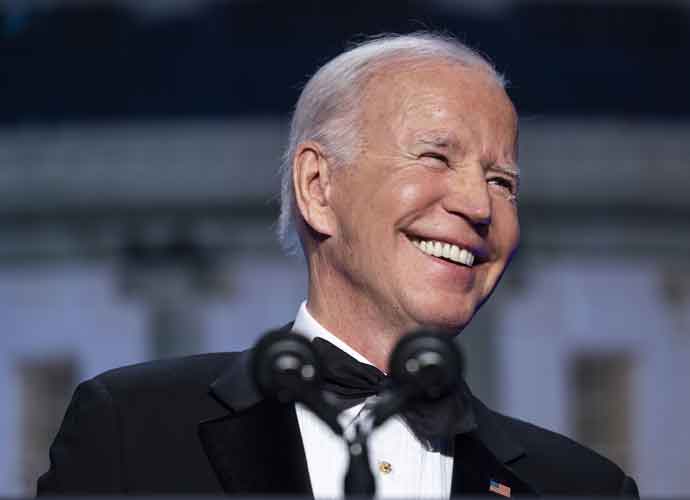VIDEO EXCLUSIVE: Tirrell Whittley & Alan Elliott On Aretha Franklin Concert Film ‘Amazing Grace’
Tirrell Whittley and Alan Elliott are two film producers for Amazing Grace, a new documentary film about late soul singer Aretha Franklin.
The pair talked to uInterview exclusively about the film, which portrays Franklin’s time with the choir at the New Bethel Baptist Church in Watts, Los Angeles in January 1972.
“In 1972, they were looking for different ways at the film company and the record company to get a sort of corporate synergy,” Elliott began explaining of how they obtained the footage of Franklin used in the film. “They had had a big hit with Woodstock, a year and a half before, which saved the film company, and so they were looking for different ways to incorporate the two companies and one of the first things they came to was this.”
Elliott added that one of their producers, Joe Boyd, was hired as the “go-between,” or liaison of sorts between the film and record companies. Boyd then in turn hired famous Saturday Night Live director Jim Signorelli to collaborate on the film. However, it was Sydney Pollack who was ultimately brought on as director for Amazing Grace. Pollack died in May 2008 at age 73 after a long battle with cancer.
“When I got the film in 2008, Sydney Pollack, before he’d passed said to me ‘oh we have all this, we have a work print, we have these interviews, we have all this stuff!’ and then I get it and what I found instead because none of that existed, was a memo that said we have hired Alexander Hamilton, the choir director, as the lip reader and that started this incredible
journey of, ‘oh my god, didn’t know what they were doing! No wonder the movie never came out!'” Elliott added.
50 CELEBRITIES WHO DIED IN 2018 – TRIBUTE SLIDESHOW
Franklin, known to many as the “Queen of Soul,” died in August 2018 at age 76 following a battle with a rare form of pancreatic cancer. She was known for hits like “Respect,” “I Say A Little Prayer” and “Chain of Fools.”
Elliott explained why Franklin decided to make a gospel album.
“I think there’s a confluence of events that are going on,” said Elliott. “One, you know, it starts with Aretha is Aretha and she can do whatever she wants. She’s got 11 number one records in a row, the record company is turning from being a real mom and pop operation that in the 50s and 60s made R&B records to becoming a corporate behemoth, and inside that there’s The Rolling Stones, Yes, Emerson Lake & Palmer, Crosby, Stills, and Nash all spreading their wings and making these double albums. Aretha wants to compete and she’s gonna go make a double album on her terms and that’s a gospel record. And so I think she probably was aware of how to do that and how to compete to go in and and you know stay up with what everybody was doing.”
“Yeah but I also think she’s not only returning to her roots but stepping into the church,” Whittley added. “As we know, Aretha could have recorded this album anywhere, she could have gone in any studio. but I think it was her decision with Jerry Wexler to say, ‘hey let’s go into a church’ in South Central L.A. and Watts at the time and she literally blows the roof off so for her and we know and watching the film, she’s still very much so in the mode of knowing that she is recording an album.”
So what was one of the most emotional scenes of the documentary for Whittley? He noted a moment where the church’s Reverend James Cleveland was shown walking away from the piano after seemingly being overcome with emotion at Franklin’s singing.
“When you’re listening to something, you just feel the energy, but you don’t see it so it’s one thing to hear it and know that something’s happening,” said Whittley. “There’s something else, there’s something different when you see it. So when I watched the film and I saw how Reverend James Cleveland was so overcome that he left the piano and that the spirit was so high during that moment. That’s why the piano drops out and Aretha really goes into the song effectively. She goes to another place that I felt was something really unique and really special.”
Full interview transcript below:
Q: How did you get this footage of Aretha Franklin?
A: Well in 1972, they were looking for different ways at the film company and the record company to get a sort of corporate synergy, they had had a big hit with Woodstock a year and a half before which saved the film company, and so they were looking for different ways to incorporate the two companies and one of the first things they came to was this. One of our producing partners a fella named Joe Boyd, was hired as the go-between between the film company in the record company, and he hired another director a fellow named Jim Signorelli, who went on to do the first 35 years of Saturday Night Live, the commercials on Saturday Night Live, and Jim had been famous for doing Superfly. And you needed in those days a very special skill set of being able to link the audio with the video and then one day Joe Boyd came to work and was told by his boss we’ve hired Sydney Pollack to direct the movie and so Joe went with it and Sidney took the job, but Sidney had never done anything like this before and his crew as you can sort of see if you’ve seen the movie, are running around and they were turning the cameras on and they’re turning cameras off they’re turning the cameras on and off, but nobody brought a clapper so you know they get back to the editing facility on the Monday and they have about 2,000 pieces of wild film. And in those days you would have to hang them on a fishing line with a paper clip and no sink points and so when I got the film in 2008, Sydney Pollack before he’d pass said to me ‘oh we have all this we have a work print we have these interviews we have all this stuff,’ and then I get it and what I found instead because none of that existed, was a memo that said we have hired Alexander Hamilton the choir director as the lip reader and that started this incredible journey of oh my god didn’t know what they were doing no wonder the movie never came out.
Q: Why did Aretha want to make a gospel album?
A: I think there’s a confluence of events that are going on, one you know it starts with Aretha is Aretha and she can do whatever she wants; she’s got 11 number one records in a row, the record company is turning from being a real mom and pop operation that in the 50s and 60s made R&B records to becoming a corporate behemoth, and inside that there’s the Rolling Stones, Yes, Emerson Lake & Palmer, Crosby, Stills, and Nash all spreading their wings and making these double albums and Aretha wants to compete and she’s gonna go make a double album on her terms and that’s a gospel record. And so I think she probably was aware of how to do that and how to compete to go in and you know stay up with what everybody was doing. Yeah but I also think she’s not only returning to her roots but stepping into the church, as we know Aretha could have recorded this album anywhere, she could have gone in any studio, but I think it was her decision with Jerry Wexler to say ‘hey let’s go into a church’ in South Central LA and Watts at the time and she literally blows the roof off so for her and we know and watching the film, she’s still very much so in the mode of knowing that she is recording an album. She’s very focused, very professional with that, but she does an outstanding job of delivering these gospel tracks and these’s gospel songs in a phenomenal way with the Reverend James Cleveland and arranged by none other than Alexander Hamilton so the way it all comes together is absolutely magical.
Q: What’s the emotional high point of the film for you?
A: I have a couple emotional high points, I think one is you know I’ve listened to“Amazing Grace” countless times and I’ve always wondered why the piano drops out? And you know when you’re listening to something, you just feel the energy, but you don’t see it so it’s one thing to hear it and know that something’s happening, there’s something else there’s something different when you see it, so when I watched the film and I saw how Reverend James Cleveland was so overcome that he left the piano and that the spirit was so high during that moment that’s why the piano drops out and Aretha really goes into the song effectively she goes to another place that I felt was something really unique and really special. The second point, I think for me is when her father walks in when the Reverend CL Franklin walks down that aisle, there’s a certain twinkle in Aretha’s eye and Allen and I we both have girls, my two are a 16-year-old and a 14-year-old and I tell my girls all the time, I was like I want you to look at me the way Aretha looked at her father, it’s a very endearing look and and I think you could tell that they have a very special relationship.
 
RELATED ARTICLES
Get the most-revealing celebrity conversations with the uInterview podcast!




 Click here for the Victoria’s Secret Fashion Show 2018: Best Photos Slideshow
Click here for the Victoria’s Secret Fashion Show 2018: Best Photos Slideshow




Leave a comment